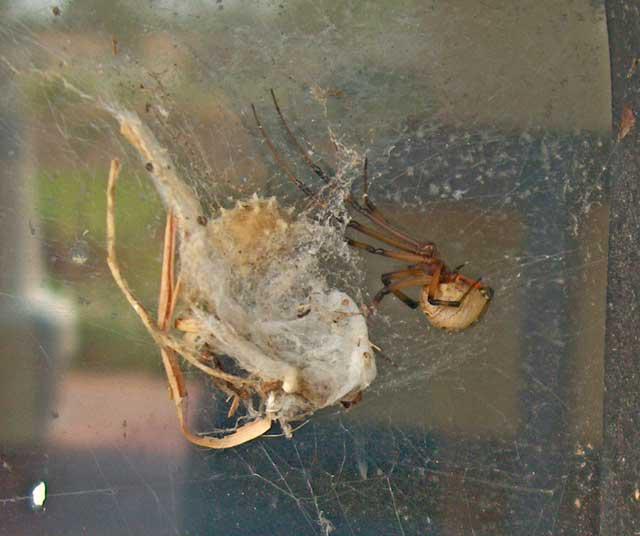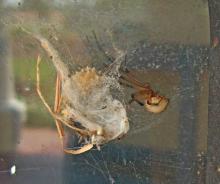Information Possibly Outdated
The information presented on this page was originally released on October 19, 2006. It may not be outdated, but please search our site for more current information. If you plan to quote or reference this information in a publication, please check with the Extension specialist or author before proceeding.
Trick or treat is true for spiders
MISSISSIPPI STATE -- Fake spiders receive special attention in Halloween decorations, but Mississippi's real spiders are true sources of tricks and treats all year long.
“Tricks,” the naughty side of spiders, come in the form of three venomous spiders found in the state: the Brown Recluse, the Black Widow and the newly discovered Brown Widow. “Treats,” or the harmless side of spiders, are found in orb weavers that are more visible during the fall months. Common orb weavers are the Black and Yellow Garden spider and the Golden Silk spider. Additionally, beneficial spiders are key lines of defense against some of the lawn's worst enemies, such as armyworms, webworms and cutworms.
Blake Layton, entomologist with Mississippi State University's Extension Service, said many people enjoy being treated to the view of the larger, harmless spiders building webs.
“The Black and Yellow Garden spider is also called a zipper spider because of a zigzag pattern in its web. The spiders grow to be about an inch in body size with leg spans of 2 1/2 to 3 inches,” Layton said. “The Golden Silk spider is elongated in shape and sometimes called a banana spider. They are slightly larger than the garden spiders. Neither are aggressive, but both can inflict a painful bite if mishandled.”
Layton said the spiders Mississippians need to be most concerned about are the venomous species. The Brown Recluse, the only venomous spider normally found indoors, is potentially the most damaging of the three because of the nature of its venom. These brown spiders have a distinctive fiddle-shaped design on their backs.
“We have a relatively new venomous spider, the Brown Widow, that is primarily being found in south Mississippi,” Layton said. “These spiders apparently came from Florida and are working their way north. They have orange, hourglass-shaped designs on their abdomens.”
David Held, entomologist at MSU's Coastal Research and Extension Center in Biloxi, just submitted the first confirmed Brown Widow specimen to MSU's Entomology Museum on Aug. 1.
“There were reports back in 2004 and 2005 of Brown Widow spiders on Keesler Air Force Base, and extensive eradication efforts were attempted. Apparently, the mild winters on the coast have helped provide a stronger foothold in the state,” Held said.
Held said people are more likely to come in contact with Brown Widows than their cousins, the Black Widows, or Brown Recluse spiders.
“Brown Widows are more bold in where they form their webs, like on the sides of buildings and outside windows,” he said. “Black Widows typically are found in piles of debris, which have been abundant on the coast, and low to the ground, such as at the base of trees.”
Unlike the Brown Recluse, the widow spiders are primarily located outdoors. They form significant amounts of egg masses and are more aggressive when guarding their eggs. After removing a widow spider, Held recommended removing and effectively destroying the egg masses.
Held said the Brown Recluse is difficult to eliminate because of its reclusive nature. After treating the house for spiders, place glue strips in areas where spiders may pass. Trapping is an important aspect of indoor spider control.
For more information on spiders, see Extension Publication 2154.



